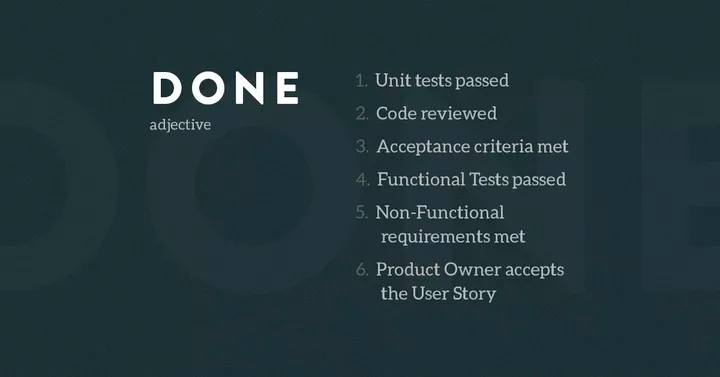Ever been on a road trip with no map? That’s what working on a project feels like without acceptance criteria. It’s easy to get lost, go off course, and never reach your destination.
But what happens when you misinterpret directions or if they’re unclear? You could end up in an entirely different place.
This can happen in software development too. The result: wasted resources and frustrated teams.
Intrigued about how acceptance criteria work? Buckle up! This post will explain what acceptance criteria are. It will also demonstrate its importance and walk you through writing one. And we’ll point out some potential missteps to stay away from.
Let’s start at the beginning.
Understanding acceptance criteria
If you’ve ever wondered “what is acceptance criteria?”, here’s your answer.
In Agile development and product management, acceptance criteria guide product owners and developers to their destination – a complete user story.
Acceptance criteria are the conditions that a software product must meet. Only then can the product be accepted by a user, a customer, or other system.
They act like a checklist that defines the scope and requirements of a user story. Think of them as a map for your development journey. These criteria ensure that everyone understands what needs to be done and how to tell when it’s done right.
They are the “definition of done” for a user story. They help teams avoid misunderstandings by setting clear expectations.

With these criteria in place, teams can focus on creating features that deliver real user value.
Why are acceptance criteria critical?
Why do we need user story acceptance criteria? Simple: they define success for each feature or functionality.
A traveler wouldn’t start a journey without knowing where they’re going. An Agile team doesn’t begin work on a user story until its acceptance criteria are clear.
This shared understanding prevents misunderstandings later in the project cycle. This happens through establishing predefined user requirements that must be met to mark the user story as “complete”.
Let’s dive in a little more. Why do you need to use acceptance criteria? Here are the top three reasons.
- To set clear expectations
This clarity helps teams know precisely what to do. It’s like having a recipe when cooking a dish. You know the ingredients and steps needed for a delicious meal.
2. To save time and effort
With clear criteria, teams spend less time guessing and more time doing the right work. It guides you straight to your destination, no wrong turns.
3. To ensure quality
Teams can deliver high-quality features by defining what ‘done’ looks like. The result is a stable and well-constructed home.
Acceptance criteria keep Agile teams on track, focused, and aligned with the project’s goals. But how do you set useful acceptance criteria?
What makes an effective acceptance criteria?
To make sure these guidelines help rather than hinder your project, it’s essential to understand what makes good Agile acceptance criteria. Think about them as the ingredients in our recipe for successful software products.
- They should be testable with concrete examples or automated tests
- We need them to be understandable by non-technical stakeholders too (think ‘plain English’)
- Last but not least, effective ones should describe desired outcomes from end user perspectives
When you define these aspects clearly before starting, you set up your team for success. It reduces the risk of missing the mark and needing costly do-overs. This way, you avoid surprises and create a product that users love.
Writing acceptance criteria from a user perspective
Writing acceptance criteria from a user’s point of view is key. It means thinking like the people who will use your software.
- What do they want?
- What problems are they solving?
This mindset helps create criteria that truly match user needs.
Given/When/Then format
Using the “Given/When/Then” format is a smart way to do this. It breaks down scenarios into simple parts.
- ‘Given’ sets the stage
- ‘When’ describes an action
- ‘Then’ shows the expected outcome
Let’s use an example of a login feature in an app. This format might look like this:
- Given: I am a registered user
- When: I enter the correct username and password
- Then: I should be redirected to my dashboard
This format clarifies each step of the user’s journey. It helps your team picture the user’s experience. Plus, it’s great for planning and reviewing work.
Identifying desired outcomes
Here’s another way of setting acceptance criteria.
Start by asking: “What does success look like for the user?” Is it faster performance? A more intuitive interface?
Once you pin this down, weave it into your criteria. It makes your goals clear and achievable.
Defining user acceptance in acceptance criteria
Finally, defining user acceptance is about more than function. It’s about fit. Does the feature work well in real-world use?
Considering different scenarios and ensuring the software performs well in each is crucial. This thorough approach ensures you meet users’ needs, not just technical specs.
TL;DR: effective acceptance criteria should be testable, clear, concise, and deeply rooted in the user experience. Focus on user perspective. This will help you craft an effective acceptance criteria.
Who crafts acceptance criteria?
Crafting acceptance criteria is a team effort. It’s like cooking a big dinner, where everyone brings something to the table.
The role of a product owner and a product manager is crucial. They’re like the head chefs. Here are some of the things they manage (with the help of a project manager):
- Outline the criteria
- Understand what users need
- Define the goals of the project
- Refine these criteria with feedback
- Ensures the criteria stay relevant and achievable
Developers are like sous-chefs in this process. Their technical skills are essential in shaping the criteria. They know what’s possible and what’s not.
They might suggest new ways to do things, keeping in line with Agile methodology. Their insights help make the criteria more practical and efficient.
QA professionals ensure that the criteria are measurable and testable. Their insights help in foreseeing potential bugs or usability issues. Including them in the process leads to higher-quality outcomes.
Stakeholders with a deep understanding of user needs and business objectives can provide valuable input. Business analysts bridge the gap between business needs and technical solutions. They play a significant role. They can help refine the criteria to align with business goals and user expectations.
Sometimes, direct input from end users or their representatives can be invaluable. They can provide practical insights into how they will use the product. This leads to more user-centric criteria.
UX/UI designers can contribute too. They can ensure that the acceptance criteria consider the user experience and interface design. Their perspective helps the product be not only functional but also intuitive and user-friendly.
Collaboration is vital in this process. When everyone contributes, you get a shared understanding. This reduces the chances of unexpected issues later on.
Best practices for writing acceptance criteria
Writing acceptance criteria is a critical step in Agile development. Here’s how to do it right.
- Start with clarity
Make your criteria clear and concise. Avoid technical jargon. Everyone on the team, from developers to stakeholders, should understand them. This simplicity prevents confusion and keeps the team focused.
2. Focus on user perspective
Always keep the user in mind. Ask yourself:
- Does this criterion meet the user’s needs?
- How does it contribute to their goals?
This approach ensures the product will be user-friendly and meet expectations.
3. Encourage team involvement
The team we outlined above? Get them involved. You create a common understanding when product owners, managers, and developers collaborate. This teamwork ensures everyone is on the same page and reduces the risk of misinterpretation.
4. Testability is key
Make sure each criterion can be tested. This helps the final product meet the written criteria and function as intended in real-world scenarios.
5. Regularly review and refine
Acceptance criteria should evolve with the project. Regular reviews and updates ensure they remain relevant and aligned with the project’s goals.
6. Learn from past projects
Reflect on previous projects. What worked? What didn’t? Apply these learnings to continuously improve how you write acceptance criteria.
7. Include non-functional requirements
Don’t forget about performance, security, and usability. These aspects are crucial for a well-rounded product.
8. Seek feedback from end users
If possible, involve end users in the process. Their feedback can provide invaluable insights into what the product needs to succeed.
9. Avoid common mistakes
Be wary of criteria that are too broad or too narrow. Too broad, and you risk losing focus. Too narrow, and you might miss essential features. Strive for a balance that gives clear direction without limiting creative solutions.
Let’s go over those common mistakes next.
Common mistakes and how to avoid them
Crafting clear acceptance criteria is essential for the success of any Agile project. However, there are common pitfalls that teams can encounter.
| Mistake | Context | How to avoid it |
|---|---|---|
| Criteria are too narrow | Happens when criteria are so specific that they limit the scope of solutions. The development team may need to test various scenarios because they are focused only on a narrow path. | Encourage a broader view while maintaining focus. This makes criteria comprehensive enough to cover different aspects without restricting creative solutions. |
| Criteria are overly broad | Leads to feature creep. This is like adding too many tools to a Swiss Army knife. This makes it cumbersome. | Aim for precision and relevance. Define what’s necessary and avoid overloading the user story with extra features. |
| Criteria are unclear | Results in confusion and misinterpretation. | Use simple, clear language. Make sure everyone on the team can understand the criteria. |
| Criteria are ambiguous | Leaves too much room for interpretation. This creates inconsistent results and confusion. | Foster open communication for clarifications. This helps everyone get the same understanding of what the criteria mean. |
| Criteria have vague expectations | Makes it hard to prioritize tasks and understand project goals. | Set specific, testable outcomes. This clarity will guide the team effectively. |
Be aware of these common mistakes and take steps to avoid them. This way, you’ll create clear and effective acceptance criteria. This will streamline the development process and enhance your product’s quality.
Conclusion: what, why, and who around acceptance criteria
Acceptance criteria aren’t just a list of tasks. They’re your guide to creating successful user stories.
Remember – clarity and simplicity in your acceptance criteria are essential. Without them, you’re risking building a product that misses the mark.
Creating effective acceptance criteria is a team effort. From a product owner to a developer, each member’s input shapes the outcome. This collective input drives the project towards excellence.
Be mindful of the common traps – overly narrow or broad criteria can derail your project.
Embrace this process, collaborate effectively, and watch your Agile projects thrive.





